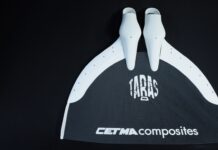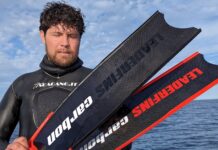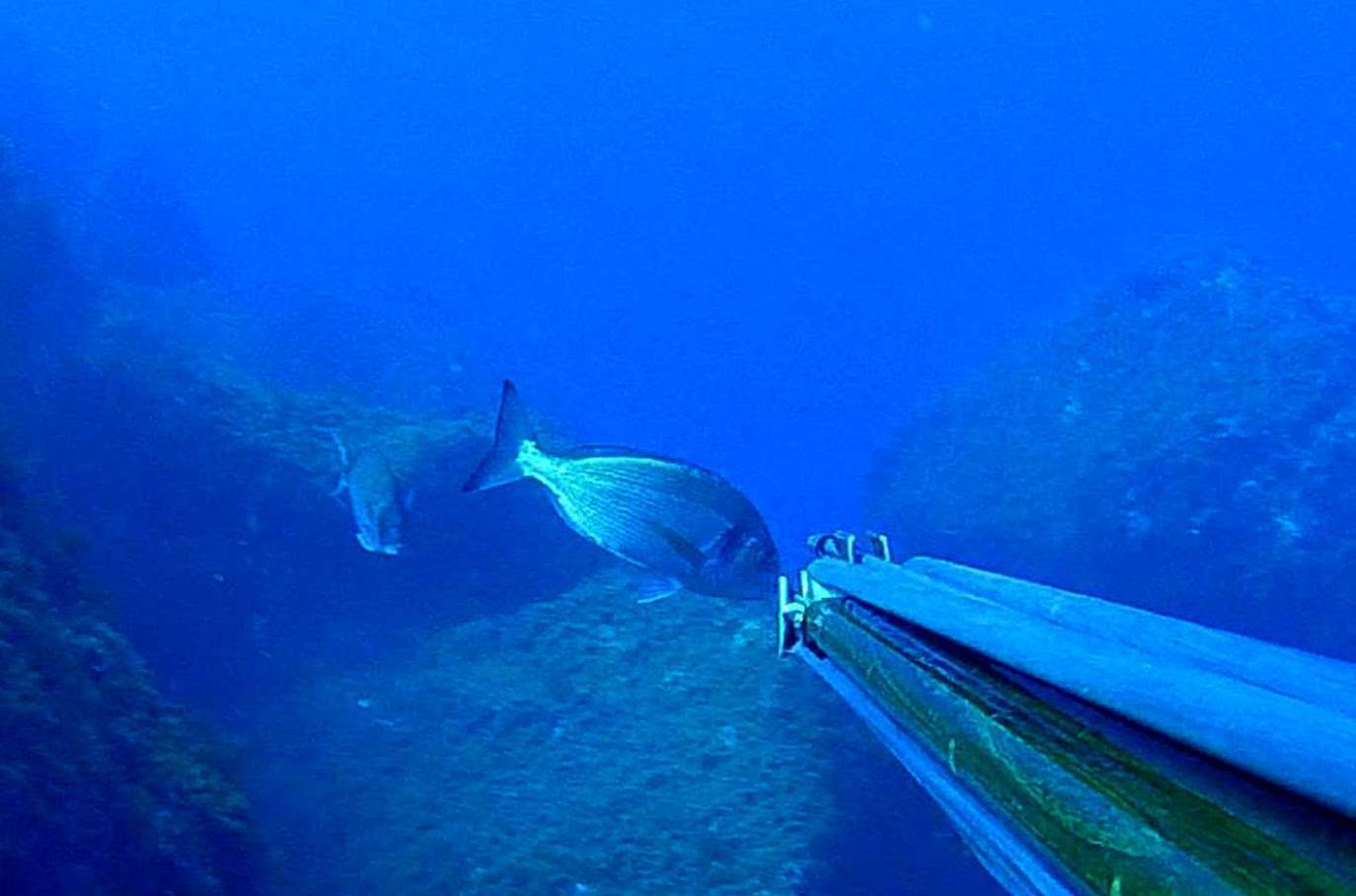The ambush technique is extremely precise and needs a lot of experience and aquatic capabilities.
Such technique can be practiced all year long, and is distinguished in shallow water and deep water ambush. We will refer to the first technique of easier execution. Depending on the season, the times of the day in which to practice ambush vary. In Summer this technique can be practiced mainly at sunrise, before bathers and boats disturb the fish, while in Winter period ambush can be practices at any time during daylight.
Ambush technique aims to astonish the undisturbed fish, while it is eating on the side of a rock or in the posidonia (long leaf sea weed), or in the moment it is still in the current or hidden in the shadow of a rock to make an ambush itself to some other fish. Our preys will need to be completely undisturbed by any external factor, spearo included.
All of this perfectly matches with the camouflage in the sea articles published recently with part 1 and part 2. At the base of the ambush technique is the possibility to be able, during al the approach phase, from the overturn to the final shot, to hide behind a cover such as a rock. In such a way the fish will not be able neither to see us, nor to feel the pressure waves generated by us with our moves. Since it will be extremely complicated to find a path which will constantly hide us during the approach, our moves, starting from the overturn, will need to be extremely slow and reduced to the minimum. It will make no sense to move along great distances over posidonia or flat rocky sea floor to make an ambush, as the fish will surely feel us with its lateral line or simply see us, and will run away before we manage to aim to it or even to simply spot it. An ideal sea floor will instead be made of big rocks or channels along which to move. It will be extremely important, during our movement along the bottom, not to use our fins, but proceed utilizing our free arm holding to the sea floor.

To be able to properly utilize such technique and to reduce to the minimum fin kicking also during our descent phase, we will need to have a heavy load, which will make us negative after just a few meters of dive. This can be applied considering that the ambush in shallow water technique is generally brought forward from the surface to maximum 10 meters of depth.
The gun, chosen with a very good brandishing , so with lengths of maximum 75 – 90 cm, both for the arbalete and the pneumatic, will always be ready to shoot, but will be slightly kept backward, to move towards the prey one it is seen. Shots are generally not too long, as the technique aims to get close to the fish and manage to have those few moments of indecision of the fish to be able to aim and shoot.
To prevale on our prey, ideal situation is to reach it from the tail or above, positions in which the fish cannot see us or perceive us with its lateral line. Evidently, any hit on the rocks will make the fish flee immediately.

Possible preys with the ambush technique are a very wide variety. If generally we will find sea breams and breams concentrated in eating on the side of a rock, or even sometimes swimming inside a group of salps, the croakers will be in herd in front of the lair or over the posidonia, while the groupers will be in the shadow of a rock, also waiting to make an ambush to a prey. Other predators, such as snappers and sea basses, will be found along the current, still, ready to attack herds of small fishes.










